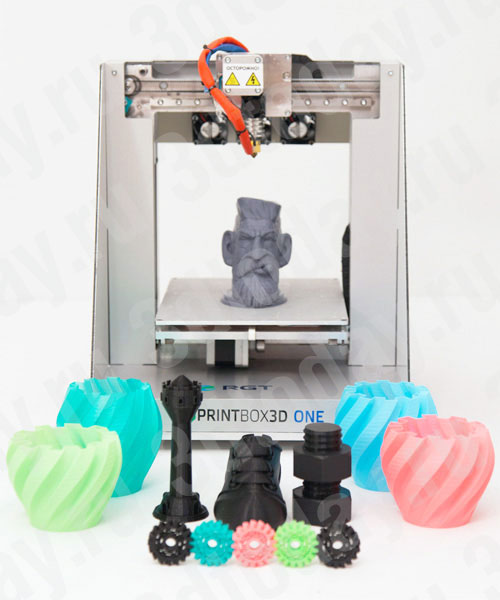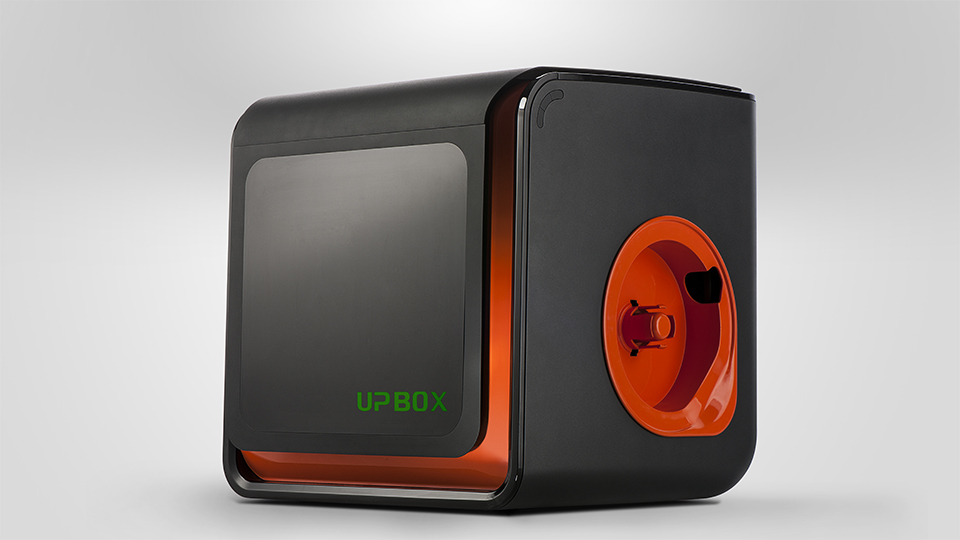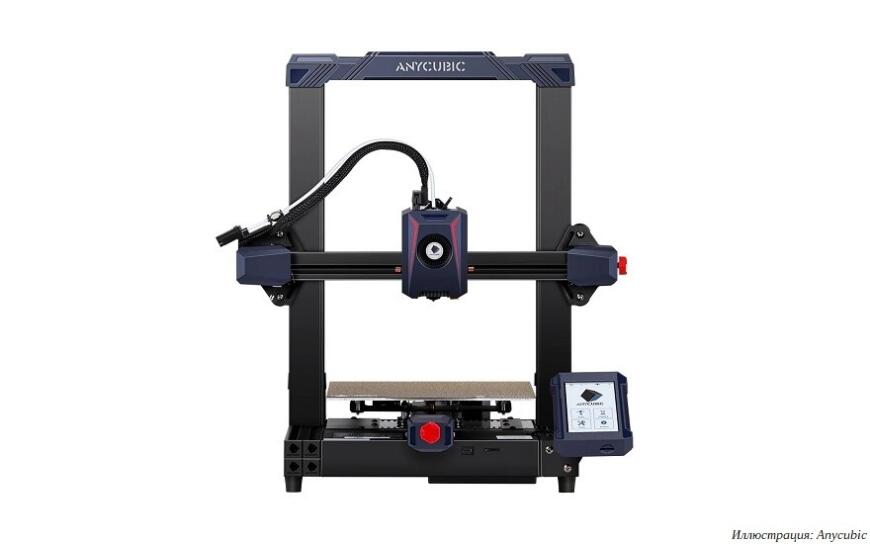Description of the 3D printer "WANHAO Duplicator 4"
WANHAO Duplicator 4 is an improved version of the Duplicator 3 3D printer, optimized for the use of PLA plastic. The device is equipped with dual extruder, created from scratch for 1.75mm diameter threads. The printer prints objects with dimensions of 225x145x150mm with overall dimensions of 320x466x382mm. The thickness of the applied layer is from 100 to 500μm. The device allows printing from an SD card to prevent possible data transmission failures.About the printer "WANHAO Duplicator 4"
The openness of the RepRap project has led to the mass cloning of the most successful designs with simultaneous attempts by both developers and imitators to commercialize them. This phenomenon is most evident in the case of the company MakerBot. If for the first couple of years the developers from Brooklyn provided their developments freely available, then the last two generations of MakerBot 3D printers already have closed source code. The company received a lot of negative reviews because of this decision, to the point of causing many users to boycott the online service called Thingiverse. But the reason lies not simply in greed, or rather, not so much in the greed of MakerBot itself. The problem is that the market was quickly flooded with clones of this company's developments, and quite good ones and more affordable in terms of price. As you might guess, we are talking about the creations of Chinese engineers.
Wanhao Duplicator 4 (left) and MakerBot Replicator 2 (right). Visual similarity is obviousWanhao Duplicator 4 really looks a lot like MakerBot Replicator 2. Even the names are similar and not without humor. Well, "duplicate" of the "replicator". Distributors believe that Duplicator 4 is a direct analog of MakerBot Replicator 2, but that's not true. Rather, both printers are parallel developments of the original MakerBot Replicator.
Design
The "duplicator" housing is made of acrylic, in contrast to the combined construction of the Replicator 2 made of steel and polyvinyl chloride, but the visual similarity is obvious. Changing the material does not present any problems - the assembly quality is high, without any play, and the plastic itself is thick and durable.
Dual extruder Duplicator 4 is optimized for printing with ABS and PLA plasticsBut the dual extruder exhibits structural similarity to the original "replicator". A dual head allows printing with two colors, but what's more important is that adding a heated platform expands the range of consumables. Like the original Replicator, this printer is capable of printing with PLA and ABS plastic, although the Replicator struggled with this task. By the way, this is also the only difference from Duplicator 3, apart from the differences in visual design. Duplicator 3 also comes with a dual extruder, but it is optimized for use with ABS plastic. Using PLA caused problems with the supply of consumables, but with the Duplicator 4, the extruder was reworked with the addition of a gripping mechanism based on amateur development. The same modification was also added to the extruders of MakerBot printers.
Printing
When printing, certain difficulties may arise, caused by the structural features of the printer and the mediocre quality of some parts. Among them, bent shafts due to the load of belts have been noticed. Although the shafts are made of steel, the quality of the steel leaves much to be desired: the metal is too soft, and the 5mm thickness is clearly insufficient.
The quality of the platform construction may require some original solutionsThe surface of the aluminum platform may not be perfectly smooth, which entails quite serious problems with twisting the layers of printed models, and worst of all - the inability to calibrate correctly and all kinds of surprises, including models coming off the platform and printing in mid-air. But this would not be the case if there wasn't a removable table. Although the Duplicator 4 comes with a glass table, the bending of the heated platform means that the platform and the table do not make full contact - hence, heating the table will be uneven. The problem can be solved by applying a layer of thermal paste, but such a solution can hardly be called aesthetic or convenient. In any case, attempting to print without a glass table is not recommended. Polyimide film or popular masking tape, i.e., adhesive tape with wax impregnation, can be used to cover the table. The platform is calibrated in the usual way, manually, with the help of spring-loaded screws.
The declared accuracy of positioning matches exactly the indicators of MakerBot of the fourth and fifth generations: 11 microns on the X and Y axes, 2.5 microns on the Z axis. The minimum layer thickness is also at the level - 100μm. The printing area is not particularly large, but it is not small either: 220x140x150mm. In general, the volume of the working chamber is not so important when working with ABS plastic, which is perfectly glued with an ABS/acetonitrile mixture. Moreover, the larger the size of the model, the higher the probability of deformation. Large models can simply be printed in parts.
Software
Main problems arise from the actual absence of factory settings regarding the software, but everything is solvable.
Skeinforge – popular open-source softwareAnother legacy of early MakerBot models was the use of an open-source slicer called Skeinforge. And there's no point in complaining - it's a decent and capable program that has gained high popularity among "makers". The wide possibilities of fine-tuning allow achieving an acceptable printing quality.
Unfortunately, the Duplicator 4 cannot be called ready for printing "straight out of the box". Since the temperature sensors may give inaccurate readings, the extrusion temperature will have to be regulated by a more or less experienced method. The same applies to the temperature of the working platform - at factory settings it may be too high (the maximum temperature reaches 120°C). When printing small details, it is recommended to reduce the printing speed. On the one hand, high speed is good for saving time, but in the case of small details, the layers may not have time to solidify, which will lead to such a result:
Not quite a cube. Resulting from platform overheating and too fast printingAgain, finding the right balance of speed and heating and extrusion temperature will have to be done experimentally. But with due patience, the Duplicator 4 will reward you with good quality models, quite on par with its American counterparts.
One of the main advantages is the presence of an SD card reader. Autonomous printing allows you not to worry about print failures arising from freezing or even slowing down of the computer. Although, if desired, printing can be done directly using the USB interface.
Conclusion
A capable, promising 3D printer at a quite acceptable price - from 55,000 rubles in Russia. There's no need to look down on this wonder of Chinese engineering. This is not a direct clone of the original "replicators". Rather, it's a parallel direction of development that will appeal to many advanced makers.
If you torture yourself for a long time, something will come of it!One of the main complaints about MakerBot has always been the lack of versatility: among all the printers produced by them, only two were equipped with a dual extruder, and only one of the two handles printing with coveted ABS plastic. Granted, such a device (Replicator 2X) is twice as expensive. If you are willing to spend time (and nerves, alas) on "sharpening by file," then the Duplicator 4 can be a great budget printer with wide capabilities.
Advantages
- Dual extruder
- Ability to work with both PLA and ABS plastics
- Low price for a device of this class
Disadvantages
- Low quality of some parts
- Relative complexity of setup
| Purpose | Personal |
| Country | China |
| Manufacturer | WANHAO |
| Technical Specifications | |
| Printing technology | Fused Deposition Modeling (FDM/FFF) |
| Number of print heads | 1 |
| Build area, mm | 225x145x150 |
| Printing speed | 40 mm/s |
| Platform | Heated |
| Interfaces | USB, card reader |
| Display | Yes |
| Consumables | |
| Types of materials | Plastic |
| Materials | ABS plastic PLA plastic |
| Diameter of the thread, mm | 1.75 |
| Dimensions | |
| Dimensions, mm | 320x466x382 |
| Weight, kg | 12 |
Printer Pricing
"WANHAO Duplicator 4" price listing
-
Amazon 10% Off
Buy "WANHAO Duplicator 4" printer on Amazone
$320 -
eBay used brand new
Buy "WANHAO Duplicator 4" printer on eBay
$???





There can be your clear opinion about WANHAO Duplicator 4